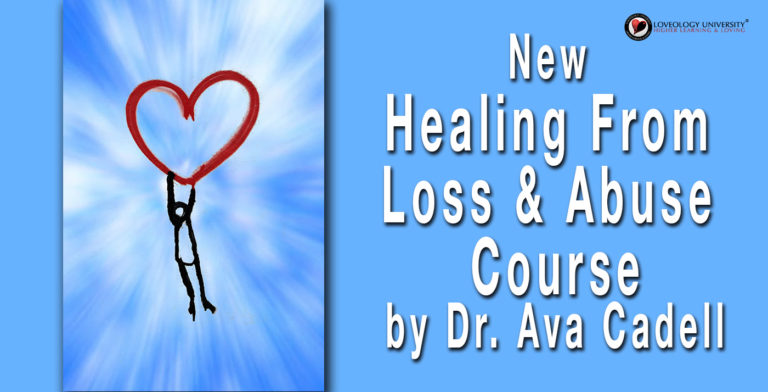Come find me at PlaymatePickup.com My six week course, The Art Of PickUp is available with personalized guidance at Virtual Sexpert.com. Acquire the skills to approach women with confidence and get them to want you!
Stop Faking Orgasms
Have you ever faked an orgasm? Lots of women do it, and I’m here to tell you: STOP!
When we do not communicate our authentic sexual desires, it sends the wrong message to our partners. When we do not tell them exactly how we feel about our sexual experiences, both parties suffer. Our partner will think they are pleasing us when in fact they aren’t, and then in turn they will have no motivation to change their moves, making your orgasm even further away from reality!
The goal of sex and intimacy is to receive the most pleasure that we can from our sexual experience, and the most important factor in achieving this is to be responsible for our own pleasure! WE are responsible for our sexual pleasure. No one else. So with this in mind, why should you stop faking orgasms? Here are three excellent reasons:
1. Enhance Your Sexual Pleasure
Now I know at some point, we all have faked an orgasm! We laid there moaning and groaning and even making a face or two while our Beloved partners thought they were pleasing us when actually they were not. As a result, we left the experience feeling more frustrated and sometimes even hornier than before. But whose fault is that? Ours! Yup, ours! When we fake an orgasm, it sends a powerful message to our partner. It teaches them two things: that we were sexually satisfied and what they are doing sexually works for us. Once that message has been received by our partners, they will continue to operate in the same manner because they feel that they have been successful! If you want to experience real orgasms, then you must be willing to communicate your sexual desires.
2. Empowers You To Take Control
Communicating your sexual desires not only enhances your pleasure but it puts you in control of your experience. When we look to other people to satisfy us, we are often times left unfulfilled and even resentful. But who is to blame? We are! We have to be willing to speak up and advocate for our pleasure. We have to be courageous and bold enough to tell our partners, in a loving way of course, what’s working and what’s not working for us. We have to be able to say, “I love it when you do this. It feels so good and turns me on.” When you say things in a loving manner, you are less likely to bruise their ego, and more likely to build them up by telling them all the things that they are doing that make you feel good. The bottom line is that you’re more likely to get what you want every time!
3. Builds intimacy
Intimacy is so much more than hot, steamy sex! It is an essential building block of relationships, and the glue that binds two individuals together. It is a choice to expose the very depths of your mind, body, spirit and soul! When you make that choice, you reap the rewards of deeply shared experiences. Tell your partner if you’re not able to reach orgasm – I promise you that it will bring you closer together. It will infuse much more meaning and truth into being intimate in general in your relationship, including kissing, holding hands, eye contact and more. Expose your sexual vulnerability to build deep emotional connections.
The essence of communicating your sexual desire lies in your ability to be open, honest, and respectful of your partner. It also requires you to trust, feel safe and vulnerable enough within the context of your relationship to allow your Beloved to see the real you – because after all, your sexual desires define a significant part of who you are.
Get involved and participate in your pleasure instead of just lying there, hoping that your partner pleases you, which by the way is not their responsibility. We must show up and be present in every experience of our lives in order to reap the total benefits. Sexual activity is no different. At the end of the day, your partner is going to make sure that they are satisfied, so why wouldn’t you? So stop faking, start communicating and begin enjoying your sexual journey!
New LU Course: Healing From Loss & Abuse
I’m about to launch a new course at Loveology University® called Healing From Loss & Abuse – Loving Solutions to Live Your Life to the Fullest for Victims of Grief, Trauma, Assault & Sexual Harassment, a wide-ranging look at how to emotionally heal from loss, pain, disabilities, accidents, disease, toxic relationships, sexual dysfunction and sexual trauma, harassment and abuse. The course has a personal connection for me, as I was a victim of sexual abuse and human trafficking as a teenager, and have spent my life learning to heal myself and others. I also suffer from chronic pain with trigeminal neuralgia and have lost my soul mate to cancer, each of these life events driving me to find ways to repair and restore my faith in happiness. The exercises I suggest in the course and companion e-book are a combination of my own and ones from other sources that have worked for me or my clients. My goal as a Love Coach and sexologist is to help people find their way back to intimacy, to love again and feel the physical and emotional pleasure we all deserve.
Healing from pain
It was only after I started seeing my chronic jaw pain as a gift that my life changed for the better. I literally woke up one day and said, “No matter what the Universe throws at me I’m going to be happy, even with this agonizing pain, which I will now perceive as a gift.” This was after two brain surgeries and many prescriptions that did not help. Shortly thereafter, I was contacted by a pharmaceutical company to do a nationwide city tour as a speaker to help people suffering from psoriasis. Even though I didn’t have psoriasis, I could relate to what suffering they were going through. Pain is an obstacle to intimacy because it can feel isolating, but ironically sometimes intimacy and sex can help to heal pain by creating positive feelings that translate into a mind-body connection. Looking at pain from a different prospective is one of life’s challenges that can make you stronger. In this section, my exercises include water therapy, humor therapy, animal therapy, journaling and many more easy-to-accomplish efforts that relieve the stress associated with pain such as visualizing the many aspects of your pain and breaking it down with your mind. I also offer practical ways to talk to others about your pain, which can add a whole other level of tension as you navigate family and friends while being distracted or debilitated.
Healing from toxic relationships
Toxic relationships damage our ability to thrive and allow ourselves the full spectrum of joy and pleasure. Whether it’s a domestic abuse situation that’s held us back or a co-dependent relationship that went on way too long, we feel trapped and paralyzed to move forward in the way that would benefit us the most. In this part of the course I cover all the bad habits we find ourselves in, like pandering to narcissists by “people pleasing” or staying in a marriage long after its expiration date. I have some archival videos here about how to get over a break up, and ways to process the grief that you are experiencing so that you can recover more quickly and most importantly, not repeat that toxic pattern! Not every relationship is meant to last, and some unions or friendships are sent to us to learn a lesson. It’s my job as a Love Coach to make sure that people recognize their patterns and break the cycle of toxicity.
Healing from sexual dysfunction
Sexual dysfunction manifests in many ways for men and women. Medical issues like diabetes, hormonal deficiency like low testosterone, medication incompatibilities, chronic pain from arthritis, and emotional issues such as depression all affect sexual performance. I’ve helped men recover from erectile dysfunction by repairing their communication with their partners, and I’ve also seen women with vaginisthmus find relief through a combination of talk therapy and pelvic floor therapy. As a coach, it’s vital to refer to a medical doctor first to discover any medical conditions. Love coaching can work alongside treatment, which can be more holistically effective. This section in the healing course outlines all these topics, laying out the medical options to consider and suggesting counseling tactics to try for yourself or with your clients. Exercises for premature ejaculation, ED and many other common sexual dysfunctions empower people with these every day issues to feel like they’re not alone and there are plenty of ways to heal and enjoy sex to the fullest again.
Healing from Overwhelm
I often hear from clients that they feel “overwhelmed,” and to me, overwhelm is a sign that you’ve lost control of your life in some important way. Experiencing a loss or dealing with trauma or disability can leave you feeling overwhelmed as you move through a range of emotions. Sadness, anger, disbelief, confusion, shock, depression – these are all natural reactions to loss or abuse, but they can leave us exhausted, and unable to get on with our lives. In this section I explore the notion that these emotions are part of the healing process and that sharing them with family and friends is helpful, so that they too understand what you’re going through and hopefully empathize. When you are overwhelmed by the stresses of life and burdens of others, treat yourself kindly by setting boundaries and saying ‘No” to things that you will resent. Say “Yes” to things that will make you feel safe, happy and valued. Resist the urge to numb your emotions with drugs or alcohol or to punish yourself for your feelings of overwhelm. Practice self-care instead, focusing on your health and wellbeing.
I will write another blog about the section in this course on sexual healing because it’s a vast topic of discussion on its own, but I wanted to give you a taste of the insights and tools you can expect to find in Healing from Loss & Abuse when it becomes available at LU as part of the Certified Love Coach Program. I will also be offering this information as an e-book so stay tuned, stay sexy – and emotionally healthy!
How To Make A DIY Sex-Attracting Fragrance
Olfactory senses play a significant part in our sexual stimulation. Whether we’re aware of it or not, smells send important chemical messages to potential mates. Tests show that Lavender ranked highly among both men and women, but the scent of licorice earned the most positive erotic response from females while pumpkin (more accurately, the spices we associate with pumpkin) was #1 among men. How appropriate that the holiday season is upon us. It’s one that often hosts scents of spiced pumpkin and other tasty foods, so naturally, it should be one that inspires people to get a little closer. Fun fact: most babies are conceived in December! Coincidence?
If you’re in the mood to entice your romantic interest and heat things up indoors while things get cooler outdoors, you may want to consider creating the ideal scent for your room or for yourself. The steps below are simple, so if you have even the slightest talent for DIY projects, the following is definitely worth trying.
For body:
To make your own irresistible scent, you’ll need a carrier oil, such as jojoba, almond, grapeseed, avocado or sesame oil. These are all easily accessible oils that are lightweight and safely absorb into your skin.
You will also need 100% pure essential oils. FYI, licorice is a difficult smell to come by, but fennel and anise have a licorice smell. Below are suggested oils for you to select from and create your own holiday spice mixture.
In a 10ml roller bottle or perfume jar, mix 10 – 14 drops of each of your favorite smells. You’ll probably want to keep this below 24 drops in total and if you want a particular scent to be stronger, make that number of drops greater than the other scents (EX: 14 drops lead scent, 8 drops secondary scent or 10, 8, 6 of a combo of 3 oils). Fill the rest of the bottle with your preferred carrier oil, close and shake. Apply to hot spots on your body like the back of your neck, wrists or insides of your elbows when you’re ready to seduce.
For home:
- Decorative jar
- Reed diffuser sticks
- Essential oils (Ex: cedarwood, lime, vanilla, nutmeg, cardamom, clove, cinnamon, pine, orange, anise, ginger)
To create your own diffuser, blend 1/4 cup of hot water with ¼ cup of vodka…yes, vodka. Then, ad no more than 25 drops of whichever combination of essential oils you chose to blend to create your ideal scent. Mix it up, then carefully pour it in into a decorative jar. Dip a handful of diffuser sticks in the jar, then take your stick out, turn them upside down, place them back in the jar and let them stay in that way. The subtle scent that this ads to your home will help set the right mood for your time with you company.
Enjoy!
How To Ask For Better Sex With Your Partner
Telling your partner that you want to try something new sexually can be stressful no matter how fantastic your relationship is. Even if you already have great communication and an openness to talk about sex, it can still bring up fears of judgment and awkwardness. If you normally don’t talk about sex in your relationship, your sudden interest to do so may incite questions from your partner who may wonder where these ‘new’ thoughts are coming from. Allow your partner the time and space to ask questions that they may have, as this is an opportunity to open up and begin to explore your sex lives together.
You may be met with excitement, hesitation, interest, reluctance and even a flat out refusal to engage in conversation and/or entertain the new sexual desire. If you are met with a less enthusiastic response, don’t push the issue. Remember it is your partner’s right to process their feelings, even if it feels like you’re bursting with sexual revelation.
Before you confess your innermost sexual desires to your partner, think about how you can bring the subject up in a way that feels safe and non-threatening to your partner. Think about things you can say to encourage your partner to hear you out, and ask them to delay judgment and responses until you finish explaining the sexual desire and why it is important to you.
Begin With What’s Already Great
Just because you’d like to introduce a new desire doesn’t mean that they weren’t pleasing you before. It just simply means that you would like to take the sex play to another level of pleasure by enhancing what you’re already doing. Praise your current sex life to make sure your partner understands this is enhancement you’re talking about, not necessarily improvement (even though it might feel that way to you.)
Do Not Bring It Up During Sex
Nothing can spoil the mood more than telling your partner what you don’t like while they are in the midst of thinking that they are pleasing you. Not only will it ruin the mood and cause them to stop but it may also result in hurt feelings and unwanted alone time for you.
Choose A Relaxed Environment
Don’t have this conversation in the bedroom. The bedroom is a sanctuary, a place of peace, relaxation and sleep, not deep conversations. Consider having the conversation over a nice dinner or walk in the park, some place that is neutral and comfortable for both of you. Somewhere in the home is okay, but remember that it’s easier for your partner to beat a hasty retreat when there’s somewhere to escape to.
Remind Your Partner That You Are Vulnerable
Remember relationships are about trust, sharing and building an intimate bond. You should be able to share your desires with your partner without feeling anything other than loved and supported. It may help to remind your partner that you are feeling vulnerable by sharing these deepest desires, to take the focus off their reaction.
Go Multimedia!
People fear the unknown or what they do not fully understand. A visual aid can do some of the communicating for you, and help to relax your partner’s fears. If they can actually see what you’re talking about, it can help to peak their curiosity and excitement. Watch a movie together or read a scene from an erotic novel that illustrates your desire and use it as a starting point for a discussion.
Emphasize The Fun
Positively persuade your partner by telling them how much fun the two of you can have exploring and trying something new. We all like new things. Think of your sexual exploration as your own personal scavenger hunt. The prize is the ultimate orgasm.
Explain How It Will Benefit The Relationship
Whenever we are doing something that we truly enjoy, the feel good hormone dopamine pumps throughout our bodies. When released, it produces feelings of pleasure and satisfaction. Now couple that with Oxytocin, affectionately labeled “the bonding hormone” which is also released during sexual activity. It produces feelings of trust, emotional intimacy, relaxation, attachment and contentment between people. It calms the spirit and lifts moods, reducing fear and anxiety.
Use Alcohol & Drugs With Discretion
You don’t want to end up saying something that you might regret because you’ve had a few shots of tequila. Cocktails lower our inhibitions, but they can also turn an important, meaningful loving conversation into something completely different. You might end up throwing out all your long-rehearsed efforts and not bothering with the whole thing, or worse, you might say hurtful things like, “You were always a bad lover, you never pleased me,” or “I’ve been faking all this time anyway.” Yeah, that’s not what you want to happen. Go easy on the substances.
Communicate Lovingly
Be supportive, not overbearing. Try not to place blame or pressure on your partner, as this will only create more stress and tension ultimately making the situation worse. Be loving and be patient. Remember things did not get this way overnight, so you can’t expect them to change overnight. It’s a process that is well worth the journey.
Sharing your sexual desires can not only empower you with new found confidence both in and out of the bedroom but it can also create an unparalleled level of intimacy between your and your partner. Your willingness to explore your sexual desires together can take you into exciting new territory far away from your old, boring sex script.
Erika Jordan’s “Advice for Men” – How To Pull Her Hair
Come find me at PlaymatePickup.com My six week course, The Art Of PickUp is available with personalized guidance at Virtual Sexpert.com. Acquire the skills to approach women with confidence and get them to want you!
Back To Basics – Sexual Positions
When it comes sex, we often get so caught up in orgasms and “goal oriented” sex that we miss the mark. We are so busy trying to impress each other with our sexual prowess that we forget the simple pleasures of good ol’ fashioned sex! These three basic sexual positions will bring you back to that space of connection and romance that inevitably leads to deeper satisfaction.
Missionary
Good Ol’ Missionary Position is one of the most romantic sex positions there is. Face to face and heart to heart, it allows partners to intimately connect on a deeper and more meaningful level. The bodies are in alignment and easy entry into the vagina means you’re not angling for any acrobatics – you’re just focused on each other. Partners are able to gaze into each other’s eyes, breathe together, take long passionate kisses, maintain body-to-body closeness, and synchronize their movements. Take your time and enjoy the pose that makes penetration more satisfying, often leading to intense orgasms for women and men.
Woman On Top
Woman on Top Position, in any variation, includes positions like “Cowgirl” “Reverse Cowgirl” “The Lotus” “Yab-Yum” etc. Women love these positions because they allow them to be able to control the speed, angle and depth of penetration. When a woman is on top, it makes it easier for her to move in a way that feels more pleasurable for her. The man’s hands are free to roam and stimulate other pleasure points of her body such as: breast, back, butt, etc., which also helps to increase her body’s sensitivity. These positions also offer direct stimulation of the clitoris and G-spot which can maximize her chances of having an orgasm.
Spooning
With spooning positions both partners can cuddle closely together. The angle of this position puts pressure in all the right places for both partners. Although spooning does not allow for eye contact, it offers a nuzzling closeness that’s hard to beat. Similarly to the woman on top positions, spooning positions allows the man all access to all the pleasure points on the woman’s body. Her partner can caress her stomach, breast, neck, and clitoris. Another reason this position is so popular is because of the full-body contact which allows for cuddling and low-intensity sex that can last for a long time.
Don’t get me wrong, there is absolutely nothing wrong with a sweaty, highly charge, acrobatic sex session. However, sometimes we need to take back to the basics. With these three sexual positions, you can not go wrong.
Free Mini Course During CoVid19
Dr. Ava Cadell is offering a free mini-course during the Corona Virus pandemic on Sexual Healing.
I hope that you and your loved ones are staying safe and healthy, both physically and emotionally during these uncertain times.
The Coronavirus is a reminder to help each other and reflect on what truly matters in our lives. It’s highly contagious, but so are the powers of love and healing.
I’m offering 3 of the 10 sections: Healing from Loss, Healing from Pain, and Toxic Relationship in this course for FREE until the end of the COVID-19 pandemic. I believe this mini-course will be highly beneficial to everyone during these uncertain times.
Click here to claim your free mini course.
9 Reasons Why Abstinence Messages Fail
Over the past few decades, the federal government has sunk millions of taxpayer dollars into abstinence programs and interventions which have yet to be proven effective. Stopping teen pregnancy, the spread of HIV and other sexually transmitted diseases among youth takes much more than a pledge, purity ring or a bogus abstinence message that only focuses on delaying sex until marriage.
Now don’t get me wrong, abstinence works well if you use it! But reality and statistics show that kids just don’t. It’s time to get real about abstinence messages and explore the reasons why they continue to fail our children.
Sex is Natural
Teenage hormones are real. When human beings discover the joy of sex and orgasm, it’s a impossible to stop that desire in its tracks and reverse the pursuit of pleasure. In fact, as young sexual beings, the pursuit of pleasure supersedes our rational mind, and the desire to orgasm clouds our common sense! We are sexual beings from the time we are born until we die. The desire to explore our sexuality is as natural as the desire to eat or sleep. These desires are embedded deep within our subconscious and begin much earlier in life than puberty. Curiosity surrounding sexuality is a natural part of development beginning with the exploration of the body. Teaching abstinence is like asking someone to stop eating or sleeping.
Peer Pressure is Real
Peer pressure is a hallmark of the adolescent experience. The desire to fit in during teen years can be overwhelming! No matter how influential you and other trusted adults are in children’s lives, their friends’ thoughts and opinions will weigh heavily on their decision making, including the decision to have sex. According to research conducted by the Kaiser Family Foundation, the majority of children in the U.S. ages 13-18 reported that they get a lot of their information about sexuality from their peers. The report also found that one of the biggest reasons that they engage in sexual activity is because they believe that their peers are also having sex. No amount of saying “just don’t” is going to convince them that shouldn’t keep up with their peers.
The Media Sells Sex
The media perpetuates specific social scripts and conceptual frameworks about sexuality. Television, magazines, movies, and music continue to shape thoughts, beliefs, and attitudes about how men and women should behave sexually, promoting the “player” status for men, and “using what you’ve got to get what you want” for women. The Real Housewives, Love & Hip Hop, The Bachelorette – just to use a few examples – are all filled with the same old narrative featuring unhealthy relationships, lack of meaningful friendships, low self-esteem, and overt sexuality as a tool or a weapon. There are very few healthy sexual dynamics presented in the media for teens to look up to and admire, and shows aimed at kids are so chaste and abstinence-assuming, that issues surrounding sexual peer pressure are avoided like the plague.
Social Media Has Opened Pandora’s Box!
Children have a natural curiosity when it comes to sexuality. Google, Facebook, Instagram, Snapchat, Twitter and all the other social media sites have increasingly become the primary source of sex education and information. Children are turning to the internet instead of parents or trusted adults, to answer their questions about sexuality. Unfortunately, the accuracy and reliability of the internet is, at best, questionable. Searching for sex education websites online can result in inaccurate information, and at worst, redirects to pornography which is massively inappropriate as a sex education tool, showing no emotional context or basis for intercourse.
The Church Sends Mixed Messages
Most churches preach one thing: refrain from sex until marriage. But churchgoers are human and you can bet that pretty much everyone in the congregation is engaging in some form of “sinful” sexual activity. There is also often a focus on female shame, where pregnant young women need to admit their her sins of fornication before the church, while the male partner does not, sending the message that only women bear the burden of sexual ‘sin’. It’s long established that religious guilt-tripping and sin shaming isn’t very helpful. It teaches children to lie, hide and be ashamed of their own sexuality, a silence that puts children at risk. When we silence them for speaking about sexuality beyond abstinence, we miss an opportunity to save their lives, or improve them.
Fear-Laden Messages Don’t Work!
Showing pictures of sexually transmitted infections or telling children that they’ll go blind if they have sex are fear-based tactics that have adverse effects. Categorizing sex as dirty and nasty, or something only bad people do, sends the message that embracing your sexuality is wrong. Not only that, it teaches intolerance for sexual diversity among the beautiful spectrum of sexuality. As a result, kids carry these unhealthy messages into adulthood and they play out in the form of unhealthy relationships, low self-esteem, depression, domestic violence, substance abuse and so much more! In addition, because the teen brain is less developed than an adult’s, they lack the biological mechanism to properly determine the possible negative outcomes of a certain action. So often times they live with a false sense of security and take risks because “it’s not going to happen to me,” or “I’m invincible.”
Do as I say and not as I do
The unspoken messages from adults regarding sexuality are oftentimes more powerful than their spoken messages in shaping children’s perception of sexuality. The behaviors adults model to children can have a significant impact on the choices they make, how they view things and even how they behave or not behave. Parents, it’s time to lead by example! If you want to send the message of abstinence, then perhaps you need to do the same? Or if you want to send a message of healthy safer sex with emotional attachment, practice that! Or if you want to sleep around, but don’t want that for your teenage daughter, you need to have that discussion too.
Penis Play Equals Notches!
Boys are socialized from a very early age to embrace their penis. They are encouraged to sow their oats and have as much sex as one man can have. This message has been passed down as if it’s a rite of passage. Society supports a very unhealthy and sometimes misogynistic view of women, relationships and sexuality, as the recent ‘locker room banter’ political discussion has proven. All these things combined create an unhealthy framework of male sexuality that promotes promiscuity, shuns abstinence, and misses out on important discussions about relationship building and intimacy.
Keep Your Panties up!
This antiquated adage gets an epic fail. How can boys be promiscuous while girls are abstinent? It doesn’t make sense, and it contributes to shame and dangerous secrecy. Back in the day, it created confusion and resentment from kids who grew up to find that their “big sister” was really their mother and other complicated scenarios arising from lies, and currently it’s wreaking havoc on young women all over the country, resulting in damaged wombs or infections from back alley abortions, and of course deep emotional scarring.
So, You Want an Abstinence Message That Works?
We need to rethink, reframe and replace the current abstinence message with one that offers an integrated approach. It must be developmentally appropriate, medically accurate, gender considerate, culturally competent. The message must be clear, concise and consistent and teach knowledge, tools and skills. In addition, effective abstinence programs must including the following:
- Teaching what it truly means to abstain, including abstain from substances
- Teaching how to choose abstinence – even after being sexual
- Teaching that the body is a temple that needs to be protected
- Identifying sexual triggers
- Understanding peer pressure and establishing healthy friendship
- Setting personal boundaries
- Defining the characteristics of a healthy relationship
- Teaching about informed consent
- Teaching communication skills
- Teaching critical thinking skills
- Teaching decision making skills
- Teaching negotiation and conflict resolution skills
- Identifying how morals, values and beliefs influence sexuality
Discussing the mental, emotional, social, spiritual, physical, biochemical, energetical, political, institutional, legal, systemic and financial consequences of sexuality
Finally, parents and other trusted adults who have chosen the abstinence talk must continue the abstinence talk. It is not a one-time discussion. The abstinence talk is an ongoing evolving discussion that changes with the needs of the child.
It can be scary to talk to your teen about sex. However, we live in a world where not teaching your child about sexuality can be even more frightening! We must acknowledge that an abstinence-only message is not working. We have to create a message that prepares them for life by acknowledging the truth that children are indeed having sex!





































